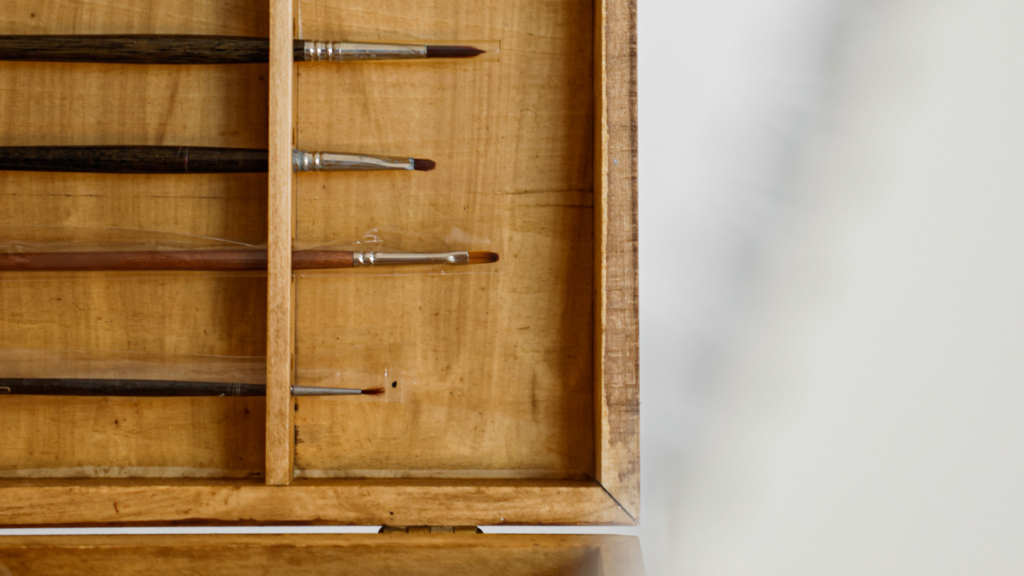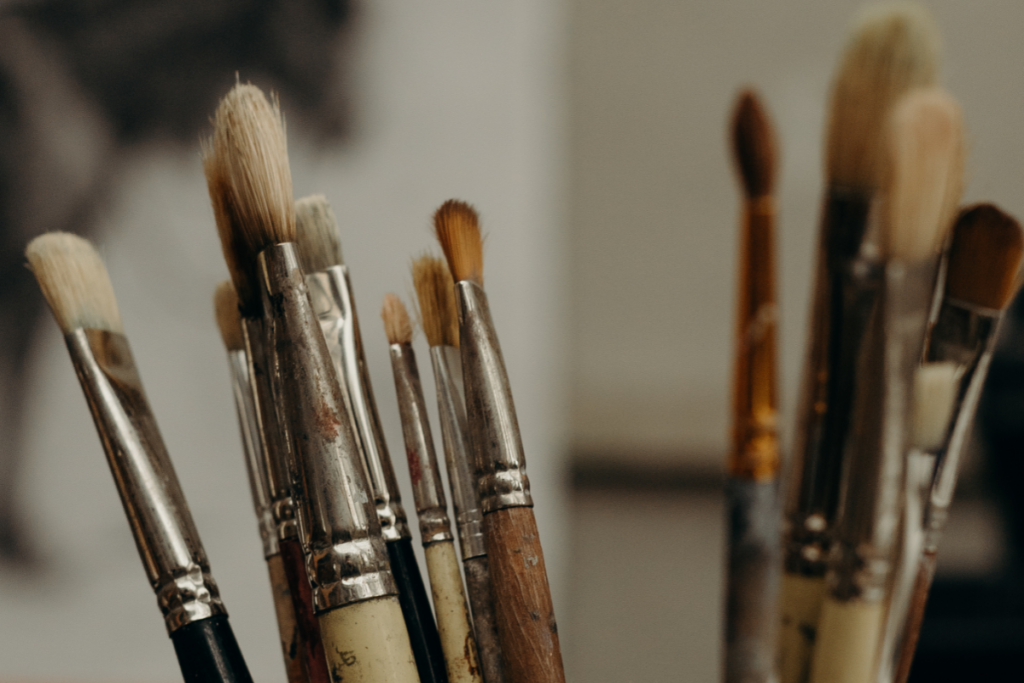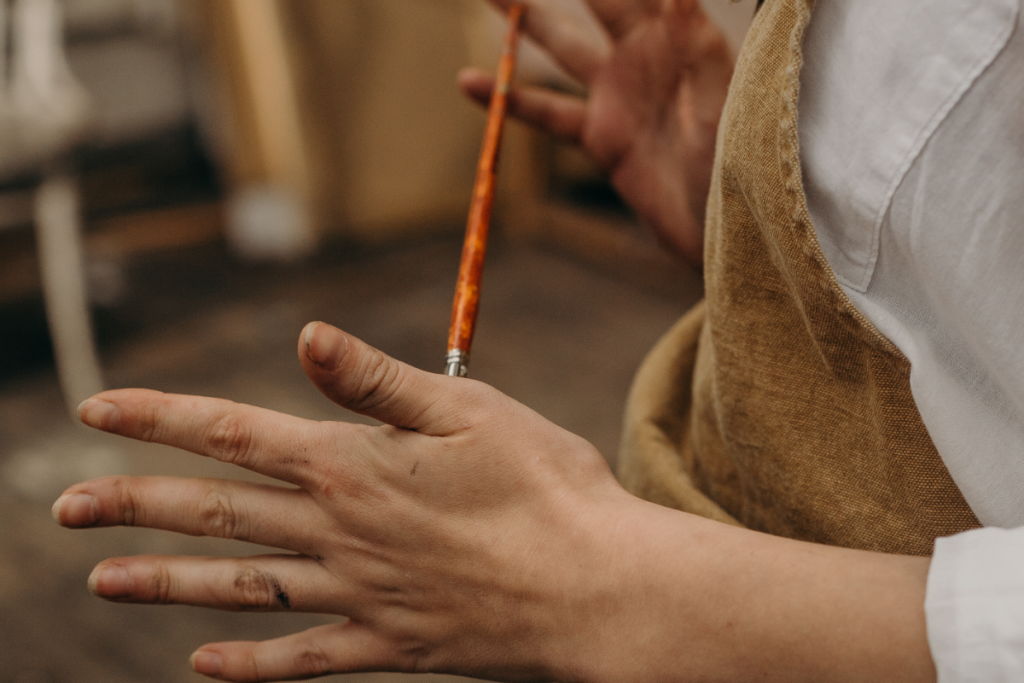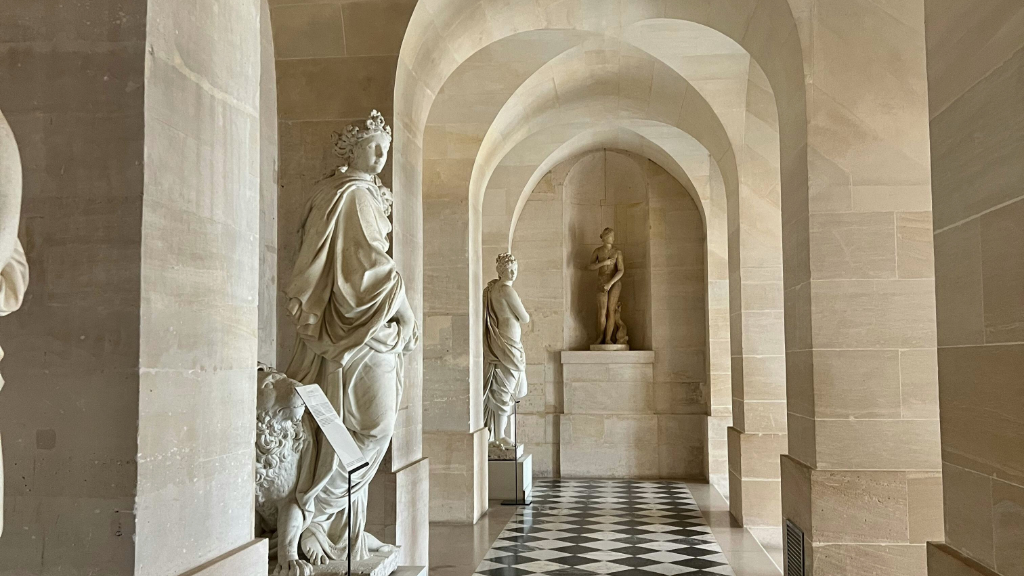
Painting Supplies for Beginners
If you are new to painting or simply curious about learning, you’ll want to know what supplies are needed to get started. In this post we’ll discuss everything you’ll need to begin painting at home, from paint, to how-to books that are best suited for beginners!
Basic Supplies
Paint
Basic colors and a large bottle of white are all you’ll need to get started (white runs out very quickly). Many craft stores will have paint sets with all of the basic colors and these are often organized based on experience level, from beginner to advanced. Search for a cheap set of beginner paint to get started.
Brushes
Large, medium, and small brushes. Large brushes are great if you want to cover the whole canvas in one color. You can easily find a set of brushes that range from small detail brushes to larger ones. Consider what you want to start painting and pick a set with a nice range of sizes. You may need to pick up a 1.5 or 2 inch brush (the larger square-ish ones) along side the set, but as you continue learning you’ll figure out which brushes you like best and grow a small (or large) collection. If you can, try to feel the bristles of the brushes you’re considering so you know how harsh or soft they will be.

Canvas
Canvas Paper is great place to start and a lot less expensive than a pack of normal canvases. You can also start with a pack or two of flat canvases from small to medium sizes. This will work just fine until you know what future projects you’ll be working on! These will be great for studies and getting the basics down without breaking the bank.
Easel
Working without an easel is fine but it can be very annoying, the stability that comes from an easel is really helpful. There are plenty of beginner friendly and inexpensive easels that will last you some time. Consider the size of canvas you plan to work on and find something simple that will suit your projects best. If you are not ready to pick up an easel, you can simply work on a flat surface but be sure to lay something down like paper underneath your canvas to protect your surface from the paints.
Pallet
I love my pallet because I get to see all of the colors I’ve used over the last few years, but when I started out I always used paper plates. Pallets can range from plastic, wood, glass or ceramic and many will last you for years. Getting started you’ll just need a small plastic or wood pallet, but you can always makeshift a pallet with the glass of an old picture frame or another smooth flat surface you don’t mind destroying.
Cup for water
A designated painting cup to clean off brushes between different colors is important (p.s. don’t drink out of this cup anymore, its only for painting now). You can use an old mug, a mason jar, or any container that will hold water and allow you to rinse off your brush between colors, again use something that will be designated for painting, you don’t want to drink out of a cup that has paint residue and chemicals all over it.
Overview
Once you have your paint, brushes, and canvas, you are just about ready to start painting! You will need somewhere to rest your canvas, to lay your paint down, and a vessel for water to rinse off your brushes, but these can either be purchases with your other supplies or upcycled from items around your home. One final thing you may want to pick up is slow-dry medium or paint retarder to keep your paint from drying too quickly. As a beginner you may spend a longer amount of time with paint exposed to the air while watching tutorials or referring to references, which means you could lose some paint in the process. Slow-dry medium will help your paint stay fresher on the pallet and helps to extend the color. Be sure to pick up the right kind of medium for the right kind of paint, there are different mediums for acrylic vs oil etc.
Resources and Tips

Tutorials & Books
There are a lot of books and tutorials that can be helpful for beginners. First you can find plenty of tutorial books to learn how to paint Waterscapes, flowers, and much more. Take some time to consider what you want to paint, and look for books that fit the style and colors you are going for! Next, YouTube is a great place to collect tutorials that you’ll want to learn as well. Create a playlist or two for painting, and start searching for the topics that interest you most. Save the tutorials you find and you’ll be able to access them when you are ready to paint! It’s always good to start small, so if you want to paint ocean scapes, follow a few tutorials on how to paint clouds or waves, then try to combine those skills into full and larger paintings.
Inspiration
Finding inspiration is just as important as finding tutorials and guides. Staying inspired and excited about painting will help you move consistently towards your goals and remind you what you are working towards. Set up a dedicated Pinterest board for the paintings and styles that call to you most. This will help you reference back to the different subjects you should learn, styles to consider, and what goals you may have! You can also search on google or Instagram to find reference photos for studies, to group ideas together for you paintings, or keep the things that inspire you most in the front of your mind. Its important to note that you can not use others images for paintings you intend to sell, with copyright laws, you will have to check about using others images or paintings for original works.
Space
A final tip for beginner painters is to cultivate a space just for painting. While you may not have much space now, having one area you return to habitually for your painting practice will help you to develop a routine and stay in a creative headspace. Even if you paint at the same desk you work from for your 9-5, try to set it up the same way each time and paint at the same times each day. If you do have some available space to create a mini art studio, print our a few images that inspires you or get some faux plants to decorate the space. Image the small corner of your room dedicated to painting will one day be a full studio just for you (if that’s what you’d like). Keep your art supplies tidy and easily accessible, that way if you feel a burst of inspiration, you can just grab your easel and paints and get right to work. One of the best pieces of advice I’ve found to be true is that if your tools are easy for you to get to and see, then you will be far more inclined to keep practicing, versus if your supplies are in the back of your closet covered by this weeks laundry (no judgment, we’ve all done it).
Conclusion
Beginning the journey to become an artist can be scary and daunting, it can be difficult to know what is needed to start, and how to best teach yourself if you’re learning at home. Build up a small arsenal of supplies, teachers, and inspiration to jump into painting head first and confident. I hope this post helps any new artists out there find inspiration, motivation, and tools to further your creation of art! Keep on researching, find what works best for you, and take your time, see you on the next one! Check out this post on learning to paint at home for more tips!

